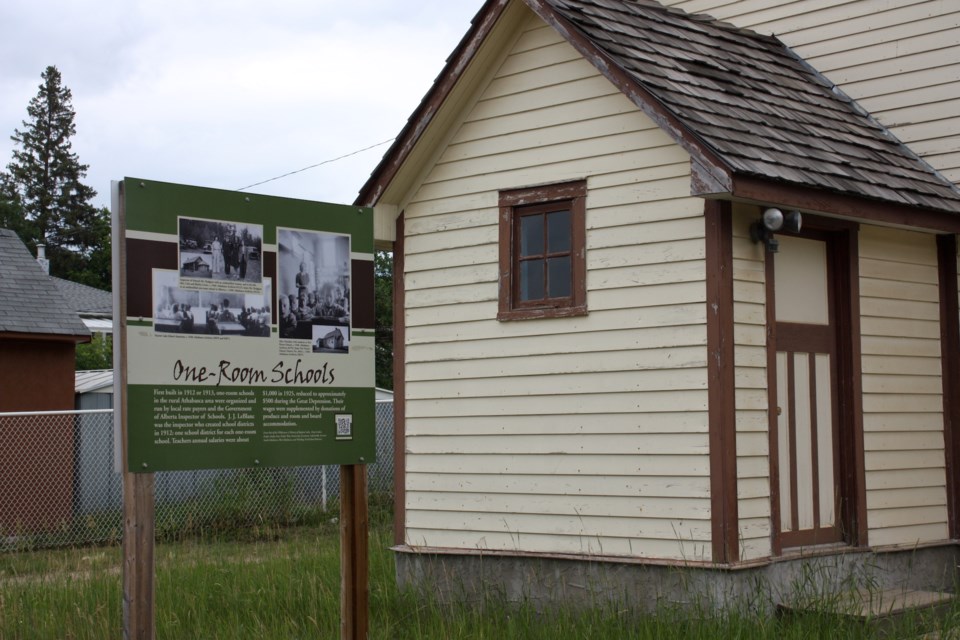ATHABASCA - It was springtime in Athabasca in the late 1940s, when one student in Jean Golonka’s Grade 1 class brought in a surprise for his teacher and classmates at the West Athabasca School — a mother beaver and her kits.
Donald Champion had brought in the animals for show and tell after his father live-trapped them — a less common feat at the time than it had been in the previous 200 years, as the fur trade had depleted the animals’ numbers in the region.
“It was the first time I had seen a beaver,” Golonka said in an interview with Athabasca University in late 2017 as part of the Athabasca Area Seniors Memory Project. “And naturally it was the first time any of the kids had seen a beaver.”
Golonka was responsible for a class of nearly 40 Gr. 1 students in the one-room schoolhouse for her four years there. The small, rectangular building that sits on 48th St. to this day, served as a classroom from 1914 up until 1951, shortly after the school was moved from west Athabasca into the town itself.
The West Athabasca School was built at the height of the region’s economic prosperity and growth following the building of the Canadian Northern Railway to connect Athabasca to Fort Edmonton in 1912, just two years prior to the building of the school.
Economic and population growth in Athabasca at the time was so rapid, a temporary building had to be brought in to serve as a school for the children in the area until a permanent one could be built.
With the help of a group of volunteers, the school went up west of Athabasca to accommodate the six children in the area that were in need of the classroom. It cost $780 at the time, which would come out to about $20,000 today.
Teachers in the one-room schools that surrounded Athabasca made less than $1,000 per year, about $15,000 today, and with little economic growth during the Great Depression, there was no demand for a larger schoolhouse until the late 1940s. Golonka was the first teacher at the school after it was moved to Athabasca.
The school was able to be moved because of the improved roadways that came about after the Second World War, and Golonka was the first teacher at the school after it was moved, where a certain student brought in a live beaver for show and tell.
Until 1951, the West Athabasca School remained in use as an elementary school, but with the growing population came the demand for more buildings that could be used to accommodate the increasing number of students from families choosing the Athabasca region as their new home.
After its closure, the building continued to serve as a community centre for activities such as dances, concerts, parties, elections, and Sunday School.
In September 2004, the school was named a registered provincial historical resource, meaning it is now protected as a historical site to prevent any future developments from occurring on the site and keeping the building safe.
As for the future of the school, the Athabasca Heritage Society has hopes of transforming the place into a studio that can be used by local artists, said board chair Margaret Anderson, who is also an archivist with the Athabasca Archives.
“Once the train station is finished, they’ll get back to work on the one-room school,” she said.
Using the many donations of chalkboards, desks, and books that have been received, the society hopes to be able to use the school as a museum for the public to enjoy while also renting out the space which would allow for the upkeep of the building and help cover the expenses of overseeing the heritage site, one of many in the region kept under the society’s watchful eyes.
With the help of volunteers and the allowance for casinos to be held with the loosening of COVID-19 restrictions, Anderson added the heritage society has the goal of keeping the building functioning and allowing locals and visitors from afar the opportunity to appreciate all of the history the school has to offer.



